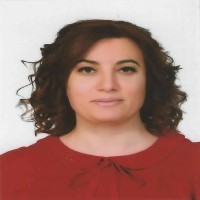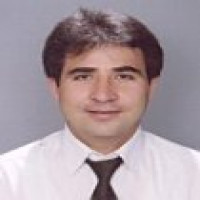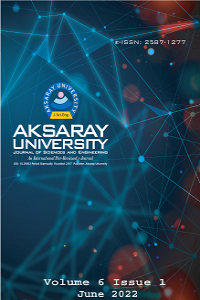Araştırma Makalesi
Sayı Editör Kurulu


Amaç ve Kapsam
The objective of ASUJSE is to provide an academic environment for researchers in various fields of science and engineering and for the publication and dissemination of high-quality research results in the fields of science and technology.
ASUJSE publishes original peer-reviwed Research&Review papers covering current research in all pure&applied science in the following category:
Pure Science (Biology, Physics, Chemistry, Mathmatics, etc…),
Applied science (Civil Engineering, Environmental Engineering, Mining Engineering, Food Engineering, Mechanical Engineering, Electrical&Electronic Engineering, Computer Engineering, Geomatics Engineering, Geological Engineering, etc…).
Yazım Kuralları
The papers should be prepared as word documents in Times New Roman (font size should be 12) on A4 size. They should be typed one and a half spaced including references and tables also.
All figures and tables should be at appropriate place in the text. The manuscript should be in the following order:
1. Title Page:
Title: The title should be relatively short but informative. Title should be written in font size 14, Capitalized each word and Bold.
Name(s) of author(s): A list of all authors of the paper should be prepared. It will contain full first (middle) name, full last name and should be written in font size 12. Corresponding author should be marked with*.
Name and address of workplace(s): Authors’ affiliations should be indicated in this section in font size 10.
Personal e-mail address(es): At least one e-mail address is needed. It will be used as the corresponding author’s email address in all contacts with the authors.
2. Abstract:
An abstract of minimum 200 words must accompany every article. It should be a brief summary about the significant information of the main paper. It should be informative and present the general scope, main results and conclusions about research/reviews.
3. Keywords:
List of all keywords proposed by the authors, separated by commas. Provide 4-6 specific and suitable keywords related to the manuscript. Please avoid repeating the title.
Note: The authors have to provide full translation of the title, affiliations, abstract and keywords in English if the manuscript is fully prepared in Turkish.
4. Introduction/Background:
Present the subject of paper clearly, indicate the scope of the subject, and present the goals of paper, novelty and justification of research work and finally the organization of paper.
5. Materials and Methods:
It should contain information about the materials and the methods adopted to carry out the research work. The units and dimensions should be expressed according to the metric system and SI units.
6. Results and Discussion:
It may be combined or kept separate and may be further divided into subsections. This section should not contain technical details. Abbreviations and acronyms should be used sparingly and consistently. Where they first appear in the text, they should be defined; authors may also explain large numbers of abbreviations and acronyms in a footnote on the first page.
7. Conclusion:
It should be representing the summary of the important findings and importance of results.
8. Acknowledgments:
Acknowledgments of people, grants, funds, etc. should be placed in a separate section before the reference list. The names of funding organizations should be written in full.
9. References:
The references should be represented as large brackets e.g [3] in the text. The references pattern should be in the following manner:
For Journal article
Initials Author’s Surname, Journal, Volume(Issue) (Year) pp.
[1] I.B. Kara, M. Arslan, Aksaray University Journal of Science and Engineering, 2 (1) (2018) 1-12.
For a Book
Initials Author’s Surname, Title, Edition (Publisher, Place of publication, Year) Page No.
I.L. Pepper, C.P. Gerba, Environmental Microbiology, A Laboratory Manual, Second Edition (Academic Press, New York, 2004) pp. 200-213.
You can download and use as a template of Fulltext English MS-WORD
Note-1: You do not need to add Turkish abstract if you prepare your article fully in English.
Note-2: There is no obligation to use a template before the article is accepted. It is the author's responsibility to prepare according to the template after acceptance.
Türkçe Makaleler için: Bağlantıdaki tam metin makaleyi indirerek Şablon olarak kullanabilirsiniz. MS-WORD (Turkish)
Etik İlkeler ve Yayın Politikası
ASUJSE is an open access e-journal which means that all content is freely available without charge to the user or his/her institution. Users are allowed to read, download, copy, distribute, print, search, or link to the full texts of the articles, or use them for any other lawful purpose, without asking prior permission from the publisher or the author.
ASUJSE do not charge;
Article submission charges (ASCs)
article processing charges (APCs) for the authors.
ASUJSE Peer Review Process
Once you submit the paper to ASUJSE, the editor-in-cheif (or Co-editor) screens the manuscript and decides whether or not to send it for section editors for pre-view. The section aditor also screens the MS and decides whether or not to send it for full peer review. Only after clearing the initial screening is the manuscript sent to at least two peer reviewers. Finally, journal editors or the journal’s editorial board consider the peer reviewers’ reports and make the final decision to accept or reject the manuscript for publication.
Ücret Politikası
Ethical Principles and Publication Policy
ASUJSE is an open access e-journal which means that all content is freely available without charge to the user or his/her institution. Users are allowed to read, download, copy, distribute, print, search, or link to the full texts of the articles, or use them for any other lawful purpose, without asking prior permission from the publisher or the author.
ASUJSE do not charge;
Article submission charges (ASCs)
article processing charges (APCs) for the authors.
ASUJSE Peer Review Process
Once you submit the paper to ASUJSE, the editor-in-cheif (or Co-editor) screens the manuscript and decides whether or not to send it for section editors for pre-view. The section aditor also screens the MS and decides whether or not to send it for full peer review. Only after clearing the initial screening is the manuscript sent to at least two peer reviewers. Finally, journal editors or the journal’s editorial board consider the peer reviewers’ reports and make the final decision to accept or reject the manuscript for publication.


